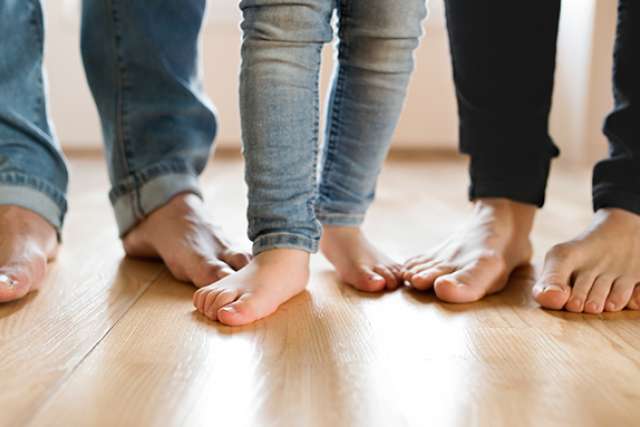
Introduction to Black Feet Syndrome
Black feet syndrome is a common phenomenon that many homeowners experience, causing frustration and concern. In this article, we’ll delve into the reasons behind this issue, exploring its causes, effects, and solutions to help you keep your floors clean and your feet free from black stains.
I. Understanding Black Feet Syndrome
A. Definition and Overview
Black feet syndrome refers to the occurrence of black or dark stains on the soles of the feet, often caused by contact with certain types of flooring materials. This phenomenon can be both unsightly and uncomfortable, leading to questions about its origins and implications.
B. Common Causes of Black Feet
Black feet syndrome can have various causes, including the accumulation of dust, dirt, and debris on flooring surfaces, as well as the interaction between footwear and flooring materials. Understanding these factors is crucial for effectively addressing and preventing the occurrence of black stains.
C. Impact on Flooring and Foot Health
Aside from its aesthetic implications, black feet syndrome can also affect the condition of flooring materials and foot health. The presence of black stains may indicate inadequate cleaning practices or issues with flooring materials, highlighting the importance of addressing this issue promptly.
II. Understanding the Role of Dust and Dirt
A. Dust Composition and Sources
Dust is composed of various particles, including dirt, pollen, pet dander, and skin cells, among others. These particles accumulate over time and can become trapped within flooring materials, leading to the formation of black stains when they come into contact with feet.
B. Interaction with Flooring Materials
Certain types of flooring materials, such as carpets, rugs, and unsealed hardwood floors, are more prone to trapping dust and dirt particles. When individuals walk barefoot or with socks on these surfaces, they may inadvertently transfer these particles onto their feet, resulting in black stains.
C. Effects on Footwear and Flooring
In addition to affecting foot health, black feet syndrome can also damage footwear and flooring materials. The abrasive nature of dust and dirt particles can cause wear and tear on shoes and contribute to the deterioration of flooring surfaces over time, emphasizing the importance of regular cleaning and maintenance.
III. Exploring Flooring Materials and Their Susceptibility
A. Porous vs. Non-Porous Surfaces
Porous flooring materials, such as unsealed hardwood, natural stone, and certain types of tiles, are more susceptible to trapping dust and dirt particles, leading to black feet syndrome. In contrast, non-porous surfaces, such as vinyl, laminate, and sealed hardwood, are less likely to accumulate debris and are easier to clean.
B. Flooring Finishes and Sealants
Applying finishes and sealants to flooring surfaces can help minimize the occurrence of black feet syndrome by creating a protective barrier that prevents dust and dirt particles from penetrating the material. Sealants such as polyurethane, epoxy, and acrylic provide durable protection and enhance the longevity of flooring materials.
C. Choosing Flooring Materials to Minimize Black Feet Syndrome
When selecting flooring materials for your home, consider factors such as porosity, ease of maintenance, and durability to minimize the risk of black feet syndrome. Opt for non-porous surfaces or choose flooring materials with sealed finishes to prevent the accumulation of dust and dirt particles.
IV. Preventive Measures and Maintenance Tips
A. Regular Cleaning and Maintenance Routine
Establishing a regular cleaning and maintenance routine is essential for preventing black feet syndrome and maintaining clean and healthy flooring. Sweep or vacuum floors regularly to remove surface debris, and mop with a mild detergent or cleaning solution to remove stubborn stains and residue.
B. Proper Footwear Selection and Care
Wearing clean and well-maintained footwear can help prevent the transfer of dust and dirt particles onto flooring surfaces and reduce the risk of black feet syndrome. Avoid wearing shoes indoors when possible, and clean or replace footwear regularly to minimize the accumulation of debris.
C. Professional Solutions and Expert Advice
In cases where black feet syndrome persists despite preventive measures, consider seeking professional solutions and expert advice. Flooring professionals and cleaning specialists can offer tailored recommendations and solutions to address specific issues and restore the cleanliness and integrity of your flooring.
V. Conclusion and Final Thoughts
A. Recap of Key Points
Black feet syndrome is a common issue that many homeowners face, caused by the accumulation of dust, dirt, and debris on flooring surfaces. Understanding the factors contributing to this issue and implementing preventive measures is essential for maintaining clean and healthy flooring and foot health.
B. Importance of Addressing Black Feet Syndrome
Addressing black feet syndrome promptly is crucial for preserving the condition of flooring materials, maintaining a clean and hygienic living environment, and promoting foot health. By implementing preventive measures and adopting regular cleaning and maintenance practices, homeowners can effectively manage this issue and enjoy clean and comfortable living spaces.
C. Tips for Maintaining Clean and Healthy Flooring
In conclusion, maintaining clean and healthy flooring requires a proactive approach to cleaning and maintenance. By understanding the causes of black feet syndrome, choosing suitable flooring materials, and implementing preventive measures, homeowners can keep their floors free from black stains and enjoy a clean and comfortable living environment.





